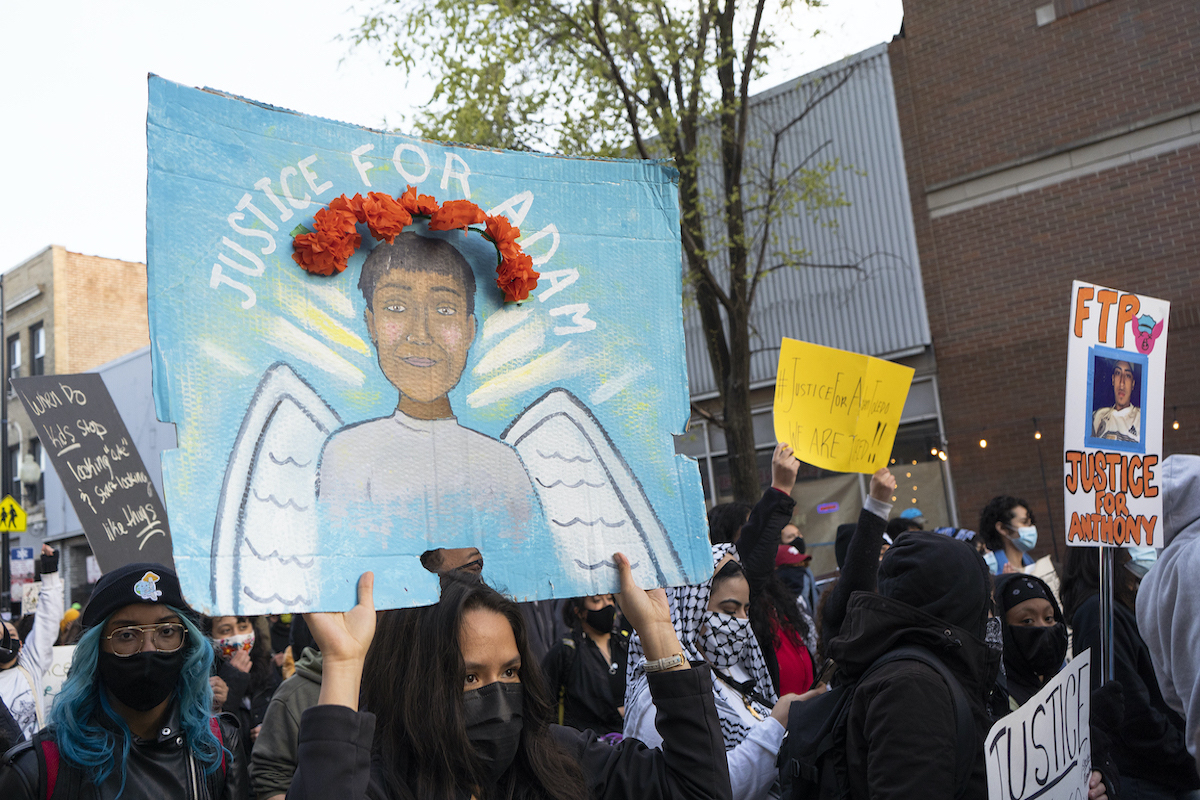CHICAGO — The conversations around the Chicago police murder of Adam Toledo focus on questioning systems: the schools, the streets, the family, the cops. But I want to talk about what it means to be a 7th grader. Adam Toledo attended 7th grade.
When a 7th grader dies in the streets, we quickly blame the parents, the schools, the streets, the cops. But the one conversation we aren’t having is how we need to support 7th graders in our schools, in our homes, in our communities.
Some years ago, I taught 7th grade at a middle school for a semester. In a 26-year teaching career so far, teaching writing to those six classes of 7th graders during the second semester remains the most difficult experience of my career.
Teaching 7th grade introduced me to students who I could not call kids or children, but I wasn’t sure I could call them young adults either. Their young-adult and adult-sized bodies filled the desks and the uniform shirts they were outgrowing. Some were taller than me. But I realize now, emotionally they were mostly kids struggling to make sense of their changing selves and their relationships with family and friends and the community around them.
Around the age of 12, confidence in girls plummets. For boys at that age, expressing emotions offers two options: happiness or anger. Or worse: being emotionless. When my high school students watch The Mask You Live In, I see them riveted by the conversations about how tween boys struggle emotionally. No one talks about that. Non-binary youth struggle even more, I’m certain.
Schools alone cannot address these biological and hormonal and societal and developmental issues of 7th graders. And, truthfully, they shouldn’t be expected to. No teacher, no matter how excellent, can address all of this —and academics— alone.
But schools can reconsider the experiences adults design for 7th graders. The middle school where I taught struggled with behavioral problems. One of the reasons was the school’s leadership failed to provide a sense of community. The divisions among the white and non-white staff created tensions that contributed to an uncomfortable school. The lack of clear expectations about what it meant to be part of that community made so many adults and students not want to belong. Abrasive interactions between administration and parents added another level of dysfunction.
Parents struggled too. I never made so many phone calls home in one semester. Some of them tried their best to guide their 7th grader to make good decisions. Others did not. I had more than one conversation with a parent who didn’t know what to do, so they fell into the first stage of grief: denial.
I don’t know the complexities of Adam Toledo’s 7th-grade life. I know he attended multiple schools; he moved to a new neighborhood; he lived on the block where I grew up in Little Village; he received special education services; he was out in the middle of the night; his mom thought he went missing.
But I know that 7th grade —that middle school— is arguably the most difficult period in a young person’s life.
I saw it with my own kids. Around that age, my son got into his first fight. My daughter faced the ugliness of girl drama. But my kids come from a home with time —and space— and relationships to help them process and persevere and survive.
As parents, we need to know, to learn, to expect that ages 10-12 bring emotional instability and insecurity that can easily overwhelm and overpower our children. Parents need help, and we need more organizations besides schools offering services and workshops and solutions.
As teachers, we need to prepare for the predictable social-emotional needs that can disrupt our 7th graders’ academic lives. We need to staff schools with people who can provide direct mental health services to students as well as support teachers and administrators to create supportive spaces.
I have long argued not for social workers in schools but for therapists.
(Someone with an MSW cannot provide direct mental health services; someone who is a Licensed Clinical Social Worker can. The CPS and CTU agreement includes MSWs.)
Programs like Afterschool Matters can also provide students with opportunities to belong —like the art program Toledo’s teachers said he needed— but participants need to be 14.
If things couldn’t get harder, let’s remember the impact of 7th grade’s report card and test scores on high-school applications. Chicago Public Schools needs to reconsider that process. (During the pandemic, they have.)
I found peace during that difficult semester teaching 7th grade by writing. One night 10 years ago when I could not sleep because I felt overwhelmed, The White Rhino Blog was born around 3 a.m.
A few years after that, I taught some of those former 7th-grade students as high school juniors. They were different people. I was a different teacher. We re-established our relationship. This time, they felt better and engaged with our class more productively. I felt better, too. Teaching high school, after all, is where I belong.
So we need to help our 7th graders belong. Absolutely, we need to reform the systems that perpetuate the turmoil, the failure, the deaths of 13-year-olds like Adam Toledo.
At the same time, we can find ways to create small spaces where the 12-year-olds in our lives experience belonging, and safety, and peace.
***
For more about Ray Salazar, check him out at The White Rhino Blog’s Facebook page, or on Twitter @whiterhinoray.




You just talked about yourself. And not about Adam. Wow just wow